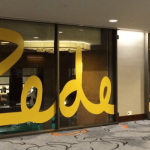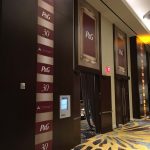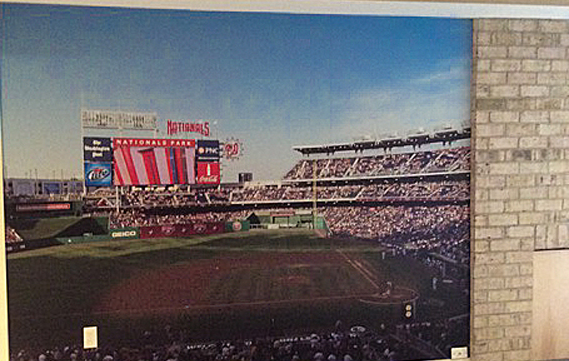
Wall Murals v Wallpaper
NOVEMBER 27, 2019| SpeedPro Silver SpringCategories
UncategorizedSometimes wallpaper has had a bad reputation. Wallpaper was often seen as stylistically out-of-date and considered hard to remove and maintain. People who bought homes with wallpaper were likely to note the amount of effort required to get rid of it.
Then things changed and the Washington Post declared that it was making a huge comeback.
Interestingly, the Post story wasn’t talking so much about traditional wallpaper but instead was describing wall murals. The  Post noted that modern “wallpaper” was likely to be used as an accent and to be digitally printed. So what’s the difference between wallpaper and wall murals? If you’re decorating a home, office or another interior, which one should you choose?
Post noted that modern “wallpaper” was likely to be used as an accent and to be digitally printed. So what’s the difference between wallpaper and wall murals? If you’re decorating a home, office or another interior, which one should you choose?
 Post noted that modern “wallpaper” was likely to be used as an accent and to be digitally printed. So what’s the difference between wallpaper and wall murals? If you’re decorating a home, office or another interior, which one should you choose?
Post noted that modern “wallpaper” was likely to be used as an accent and to be digitally printed. So what’s the difference between wallpaper and wall murals? If you’re decorating a home, office or another interior, which one should you choose?This email shares information on these options. There are also quite a few photos so please scroll through to see some varied projects!
MATERIAL USED
One difference between wallpaper and wall murals is the type of material used to make them. Both wallpaper and wall murals can be made using a variety of materials. The types of material a wall mural might be made out of include:
- Vinyl: Two materials are often used to produce vinyl wall murals. Cast vinyl is a thin material that can provide bright, vibrant colors. Calendared vinyl is slightly thicker and better suited for larger walls. Cast vinyl’s thinness allows it to turn corners or wrap around columns a bit better than calendared vinyl.
- Photo paper: Photo paper is a type of paper that has a light-sensitive coating on top of it. The coating allows the paper to produce photographic prints. Photo paper is ideal for interior wall murals with a photographic print or pattern.
- Canvas: Canvas is a type of fabric, usually made from cotton or a cotton/polyester blend. Unlike vinyl or photo paper, which tend to be smooth, canvas gives a wall mural a bit of texture.
- Perforated window film: As you might guess, perforated window film is used to produce wall murals that are meant to be hung on glass surfaces. It can be used on windows or on walls made from glass. The perforations let the light shine through. Also, it’s possible to still see out of the glass from one side when the window film is used.
- Polyester or Mylar: Polyester or Mylar – a type of polyester – are often used to create outdoor wall murals.
There is some overlap between the type of materials used to  create wallpaper and the materials used for wall murals. Some of the types of material you might find wallpaper made from include:
create wallpaper and the materials used for wall murals. Some of the types of material you might find wallpaper made from include:
 create wallpaper and the materials used for wall murals. Some of the types of material you might find wallpaper made from include:
create wallpaper and the materials used for wall murals. Some of the types of material you might find wallpaper made from include:- Lining paper: Lining paper wallpaper is the “no-frills” wallpaper. It’s usually unprinted and plain. Its purpose is more to cover up imperfections in a wall rather than to add visual interest to the wall. It’s traditionally painted or covered over with another type of wallpaper.
- Cellulose: Traditional wallpapers tend to be made of cellulose, a breathable material that isn’t water-resistant. The inks used on cellulose wallpaper tend to fade when exposed to sunlight.
- Grasscloth: Grasscloth is made of a type of natural fiber, such as bamboo or hemp, which is pasted onto rice paper. Grasscloth wallpaper typically comes in 36-inch rolls. It’s not water-resistant and has a reputation for being more challenging to care for compared to other materials.
- Vinyl-coated paper or fabric: Vinyl-coated wallpaper is more water-resistant than plain paper or cellulose options. It’s typically used in areas that have high humidity, such as bathrooms or kitchens.
- Vinyl: Like a wall mural, wallpaper can also be made of vinyl. Vinyl wallpaper is very durable, water-resistant and easy to clean.
- Velvet-flocked paper: Some types of wallpaper have a velvety coating, which gives the surface a soft, fuzzy feel.
- Foil: If you’ve ever seen shiny wallpaper, you’ve witnessed foil wallpaper in action. Foil wallpaper typically needs to be used along with lining paper, as it is thinner than other materials.
- Non-woven: Non-woven wallpaper is made from a mix of natural and synthetic materials. It’s meant to be a more eco-friendly alternative to vinyl wallpaper.
USES AND LOCATIONS
Another notable difference between wallpaper and wall murals is where they are used. You might cover all four walls of a room, and even the ceiling, with wallpaper. However, it’s unlikely that you would put a wall mural on the four walls of a room. Usually, wall murals are used on a single wall. They are meant to be an eye-catching accent.
The goal of wallpaper is also somewhat different from the purpose of a wall mural. Wall murals can be used as advertisements, which is why you sometimes see them outdoors. Even when used indoors, a brand mural can advertise a company or product.
Typically, wallpaper can add visual interest to a room or tie together a design. But it’s not going to be the focal point of a room, the way a large wall mural might be.
Some places where you might use wallpaper include: in a bathroom a home, in a kitchen, in a living room, in an office or conference room, in a closet, in a dining room, in a bedroom.
 Some places where you might hang up a wall mural include: in the waiting room of a business, in a conference room, on one wall of a living room, on one wall of a dining room, in a cafe or restaurant, in a store, in a shopping mall, on the outside of a building or at a school.
Some places where you might hang up a wall mural include: in the waiting room of a business, in a conference room, on one wall of a living room, on one wall of a dining room, in a cafe or restaurant, in a store, in a shopping mall, on the outside of a building or at a school.One thing worth noting is that wallpaper isn’t limited to use on the walls. Some people have gotten creative and used pieces of wallpaper to line dresser drawers. You could also cut a piece of wallpaper to fit in a frame and hang it on the wall as a decorative object. Because the design scale of a wall mural is usually much larger than the size of the pattern on wallpaper, you can’t do the same with a mural.
DIY OR PROFESSIONAL INSTALLATION
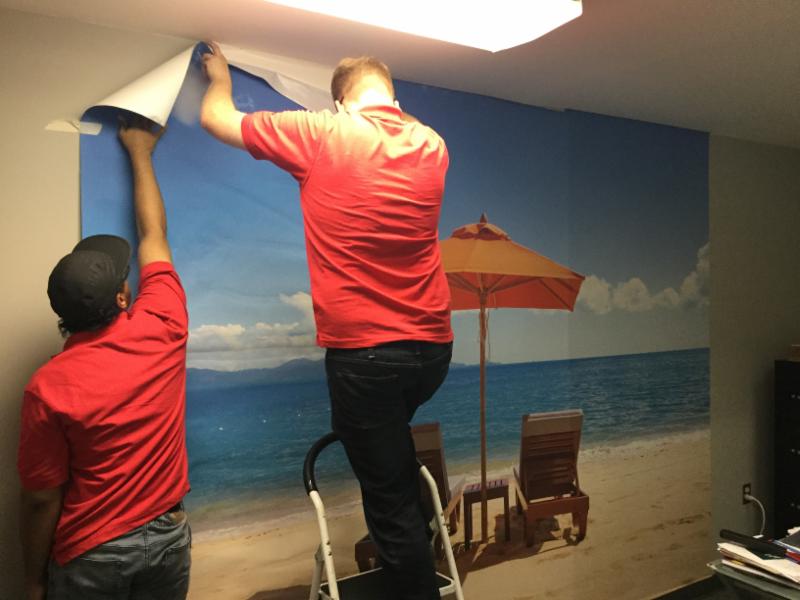 One thing to note about applying either wallpaper or a wall mural. You can do the work yourself, but you might find that you get better results if you hire a team of professionals. Both wallpaper and murals can be professionally applied, which takes the guesswork out of the project.
One thing to note about applying either wallpaper or a wall mural. You can do the work yourself, but you might find that you get better results if you hire a team of professionals. Both wallpaper and murals can be professionally applied, which takes the guesswork out of the project.DESIGNS
The design you’ll find on wallpaper is often considerably different from the designs used to create wall murals. Typically, custom wallpaper isn’t an option. The patterns available on wallpaper are usually mass-produced and readily available for purchase at stores.
Wall murals, on the other hand, often do feature custom designs. You can create a wall mural from a photograph or image that your company provides. You can also design your wall mural using your company’s logo or colors.
The scale of the design differs between wall murals and wallpaper. You’re likely to see smaller scale, repeating patterns on wallpaper. Designs such as fleur-de-lis, stripes, florals and dots are all familiar. While you can use small-scale patterns as part of a wall mural, it’s more likely that case that a mural will have a bigger design.
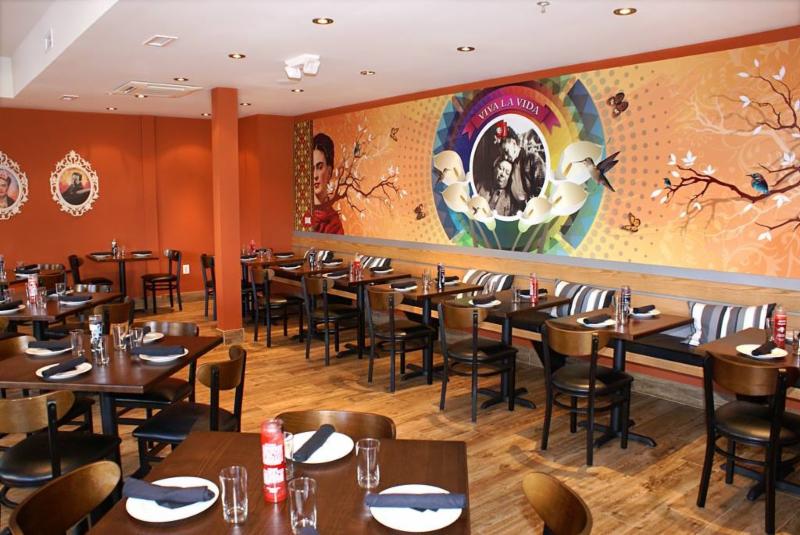 For example, the design of a mural might be an enlarged image of horses running across a river or a life-size or larger-than-life photo of a group of people. A mural might have large lettering that spells out a brand’s name or a family’s name, or it might have a slogan or quote.
For example, the design of a mural might be an enlarged image of horses running across a river or a life-size or larger-than-life photo of a group of people. A mural might have large lettering that spells out a brand’s name or a family’s name, or it might have a slogan or quote.How the design is arranged also differs between wallpaper and a wall mural. Depending on the size of the mural, the entire design might fit on a single panel. If the mural is very large, a portion of the design might appear on one panel, the next part on the second panel and the remainder on a third. Usually, wallpaper is sold by the roll, and each roll of a design is identical.
LIFESPAN AND CARE REQUIREMENTS
One thing that wallpaper and wall murals have in common is that both can have long lifespans if you care for them properly. Wallpaper and wall murals can last for many years.
Proper installation is essential if you want your wallpaper or mural to stick around for a long time. So is keeping the wallpaper or mural clean and protecting it from damage.
 The care requirements for wallpaper and murals differ slightly, depending on the materials. Some types of wallpaper are sensitive to moisture damage, so you don’t want to get them wet. Others, such as vinyl wallpaper, can be wiped clean with a damp sponge. You can usually also clean a wall mural with a damp sponge if you need to. Whether you’re cleaning vinyl wallpaper or a mural, avoid using harsh cleansers, such as bleach. Bleach and other strong cleaners can damage the material.
The care requirements for wallpaper and murals differ slightly, depending on the materials. Some types of wallpaper are sensitive to moisture damage, so you don’t want to get them wet. Others, such as vinyl wallpaper, can be wiped clean with a damp sponge. You can usually also clean a wall mural with a damp sponge if you need to. Whether you’re cleaning vinyl wallpaper or a mural, avoid using harsh cleansers, such as bleach. Bleach and other strong cleaners can damage the material.For day-to-day cleaning of wall murals and for wallpaper that you can’t get wet, it’s a good idea to brush the surface with a soft cloth or duster. You might also try vacuuming the wall to remove dust.
If you need to remove stains from wallpaper that you can’t get wet, your best bet is to use a product called wallpaper dough. Wallpaper dough absorbs stains off of the surface of the wall. It’s reusable and usually found at hardware stores.
GRAB SOME ATTENTION WITH A WALL MURAL FROM SPEEDPRO
If the waiting room or hallway of your business needs a little something extra, you can add some life and zest to the room with a wall mural. SpeedPro specializes in large-format printing, including large wall mural printing. We will work with your team to create an attention-grabbing, eye-catching mural that’s custom-designed for you.
Please call us at 301-588-7733.
A consultation is always complimentary.
More photos at www.SpeedProSilverSpring.com.


